January 11th, 2017:
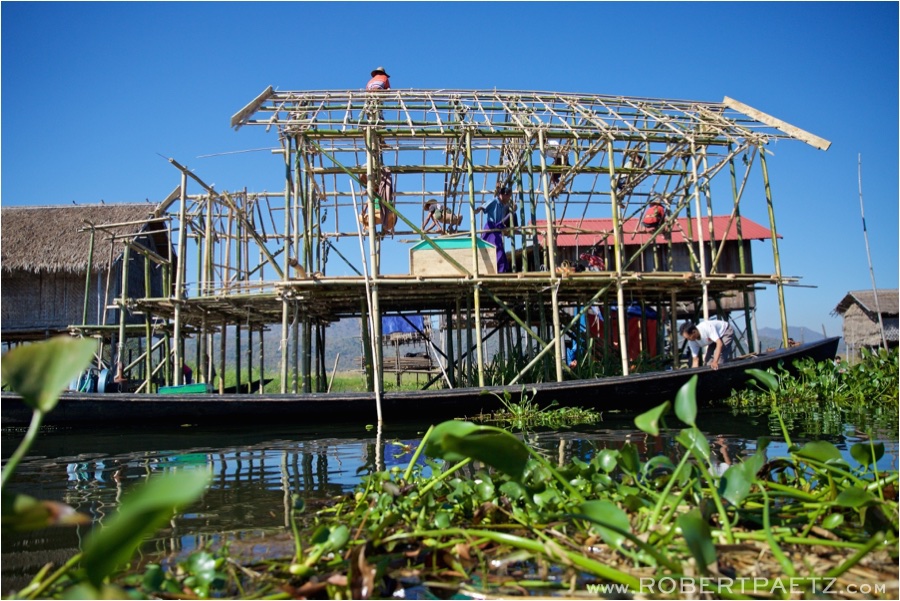
The main reason for my trip to Myanmar (other than the fact I love going anywhere new), was to work with some NGOs to create new visuals for them to tell their stories of the work they are accomplishing here. The first project was to document homes being built in the various villages on Inle Lake by the Global Community Service Foundation.
The day I arrived in Nyuangshwe I met up with Kaythi Win Aung, a local and the GCSF representative for Inle Lake, and she gave me the run down of all the projects she coordinates here – Home building, a mobile library, a mobile midwife service and the running of 5 different schools. She gave me the timeline she was thinking to try to get images of all this and told me she would pick me up the following morning to head out on the lake.
As soon as she picked me up, I asked tons of questions and Kaythi had responses for everything. Here are some answers:
- Each house takes 6 days to build by 6 hired men plus community volunteers.
- Houses sponsored by the GCSF cost donors $2500USD including organizational overhead and costs to wire money. Since the GCSF is an American based 501(C), these donations qualify for a tax deduction in the U.S.
- Since 2010 Kaythi and GCSF have build 75 homes in 15 villages around Inle Lake.
- Last year only 3 homes were donated, but with unlimited funds, Kaythi has the infrastructure in place to build up to 3 homes per month.
We started off in Hsee Hsone village (population 500) to spend some time at the construction site of a house for Ko Tan Aye, Ma Tin Aye and their two children. It really is quite amazing what people can do with bamboo, nails, and wire.
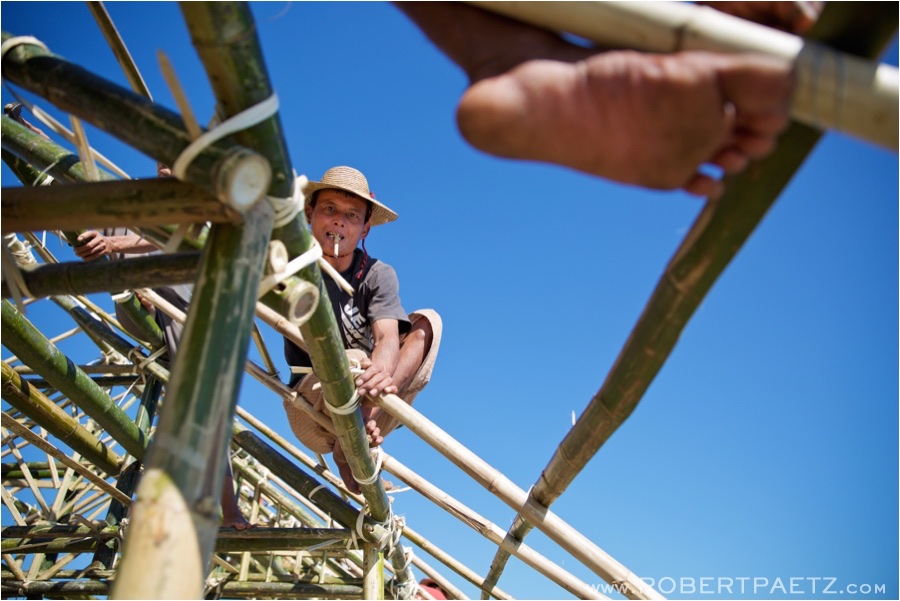
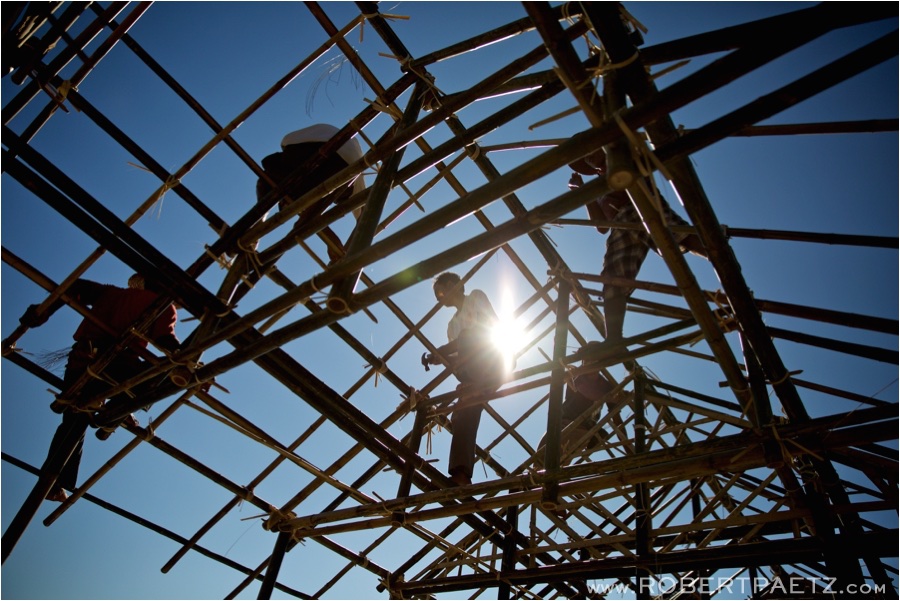
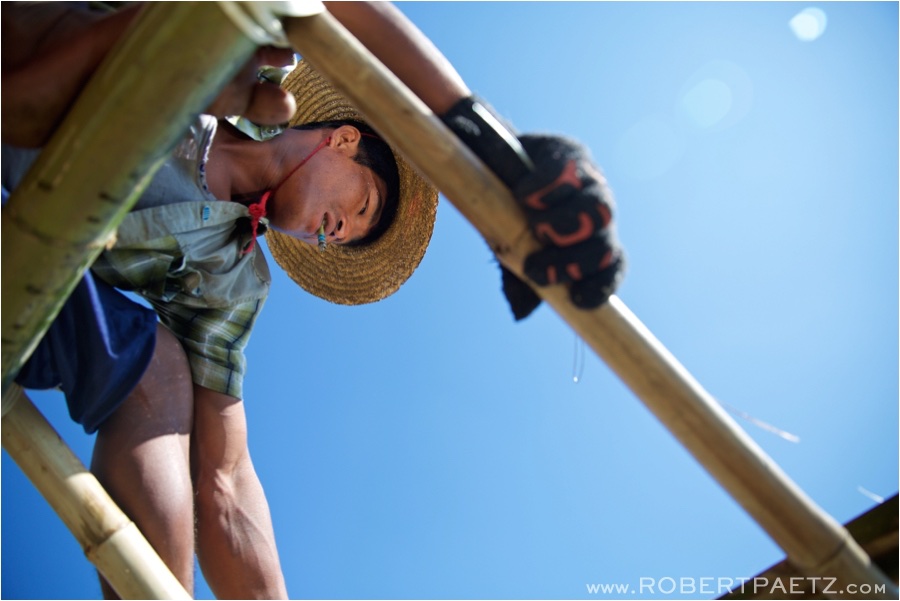
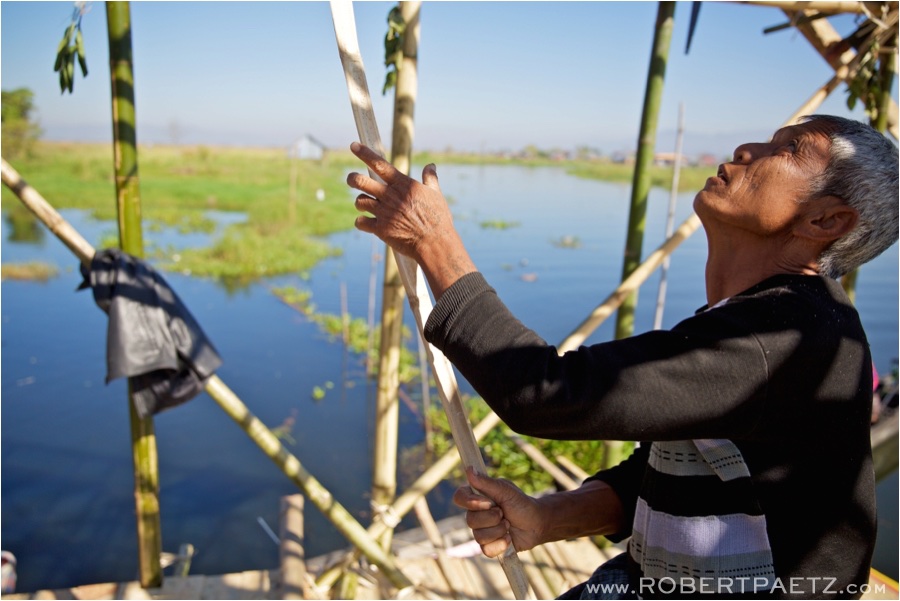
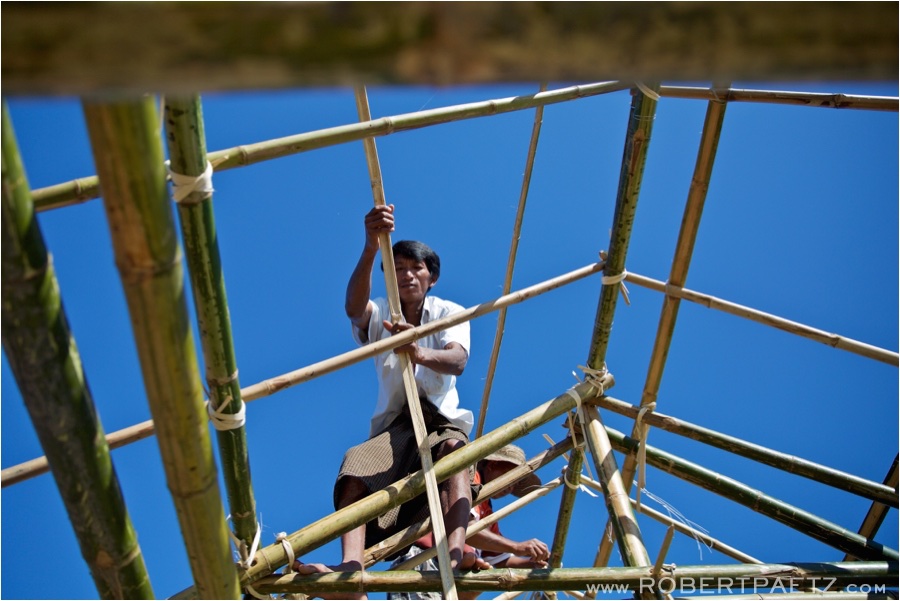
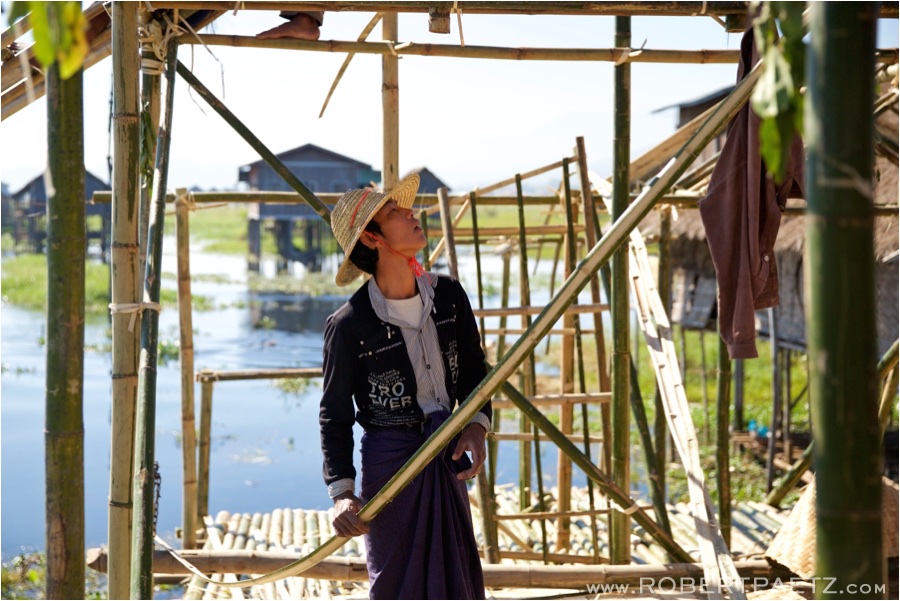
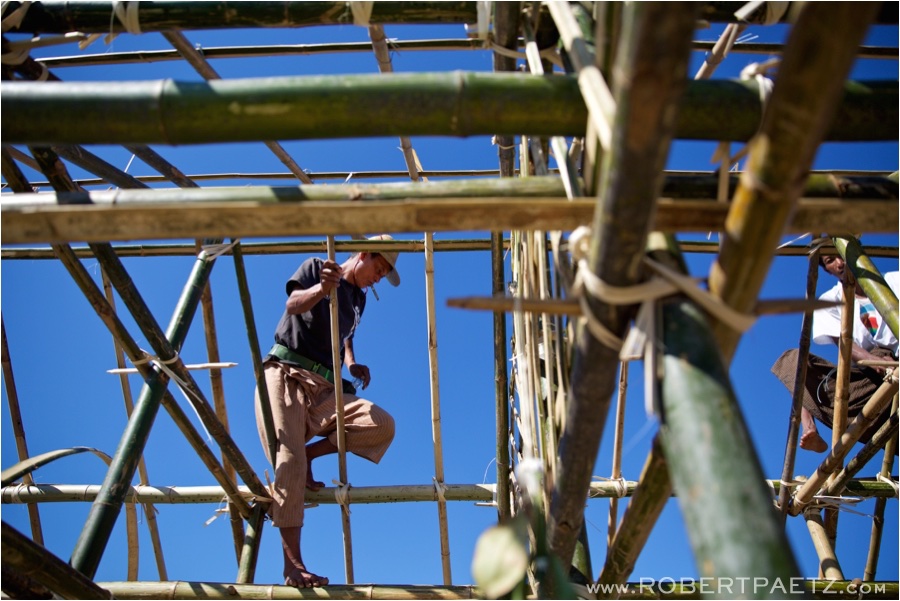
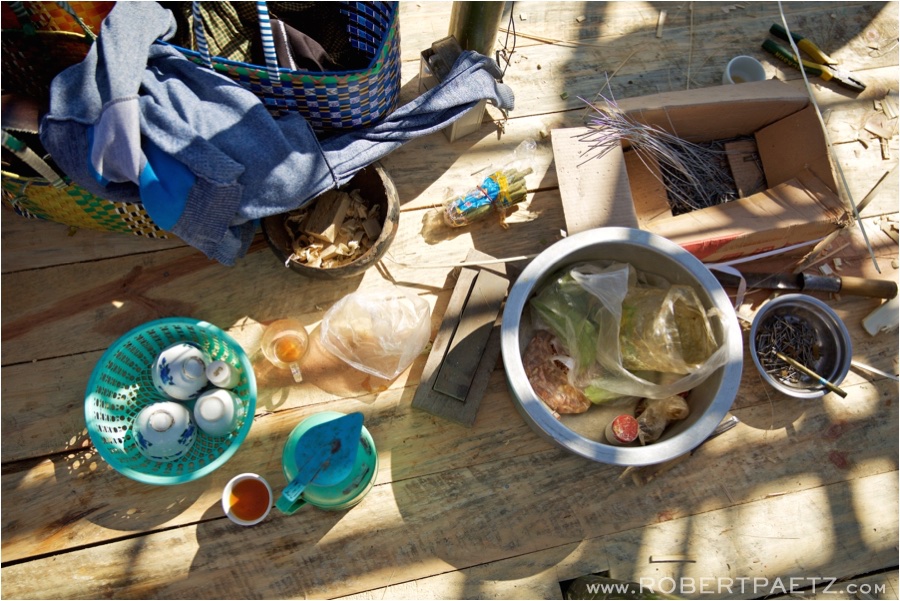
Tea, local cigarettes, tools and betel nut.
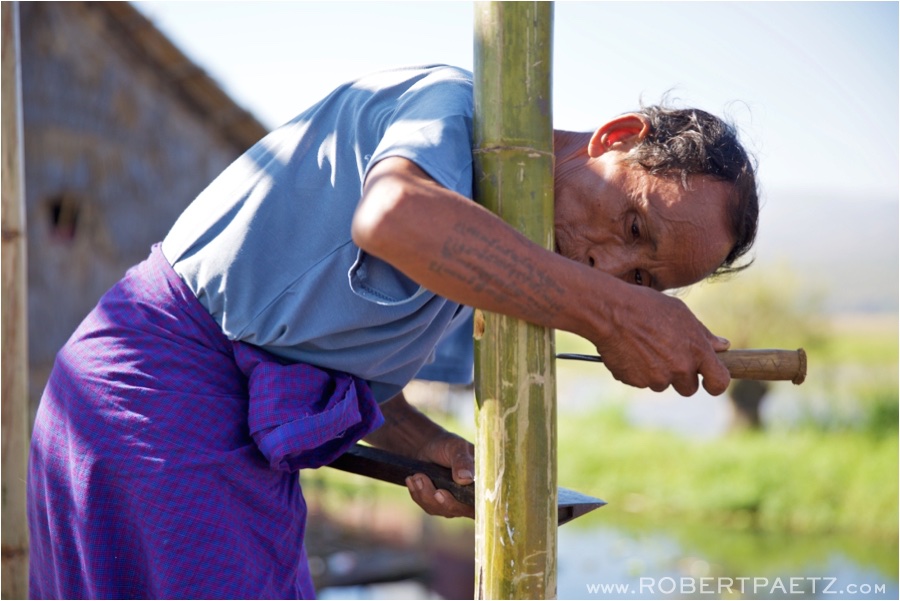
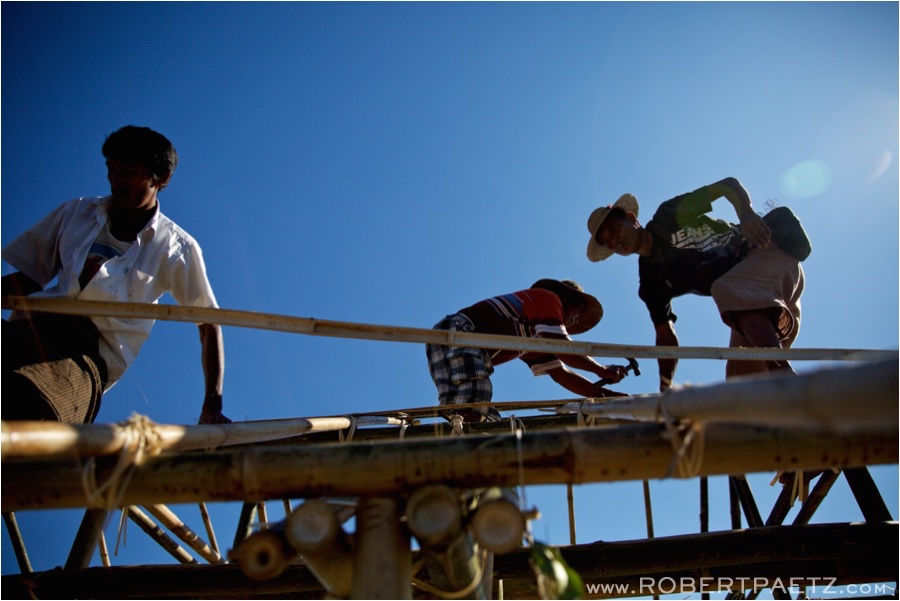
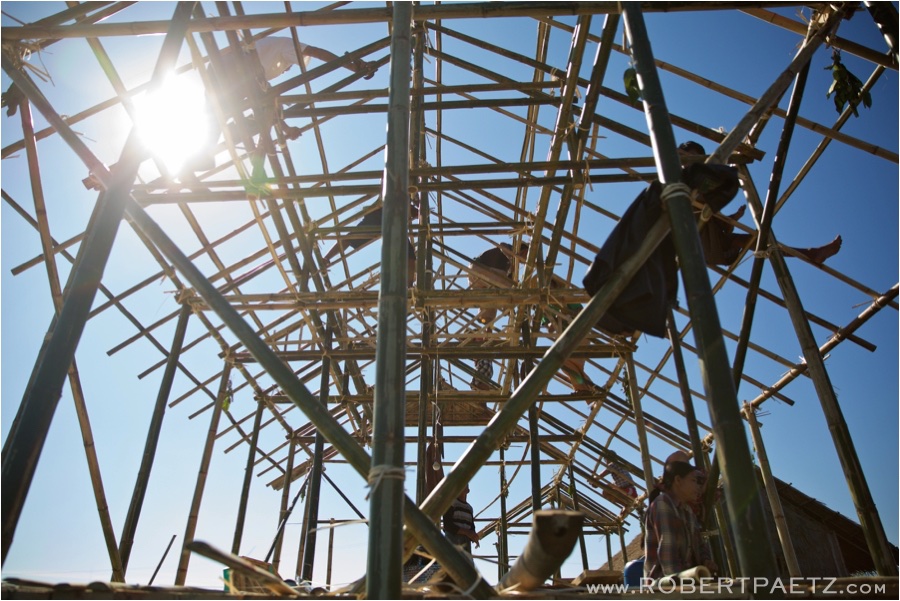
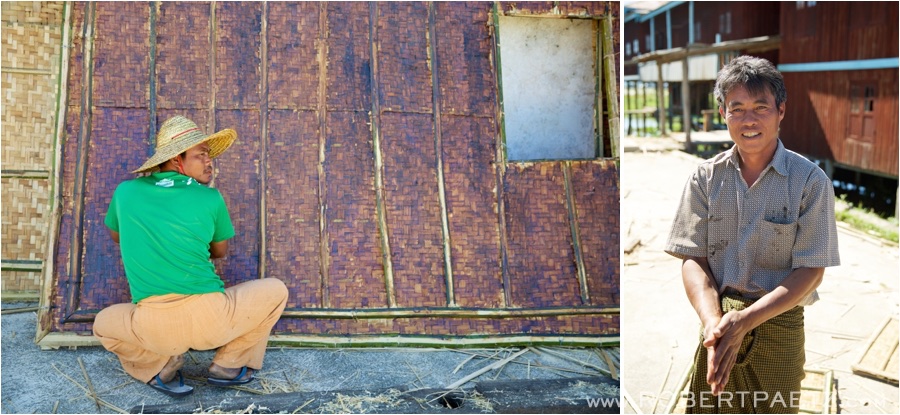
House walls are built offsite at a nearby monastery where once assembled they are coated with a mixture of tar and oil to preserve the building materials. To properly maintain the walls, they should be recoated with this wash each year or the homes will begin to degrade. Ko Tan Aye (the man whose house is being built), is the fellow above on the right.
One of the things that is a big deal to the locals is that the new homes have aluminum roofs, which don’t fill with bugs and vermin and don’t require replacement every couple of years like the traditional thatch does. The other feature is solid plank floors, as opposed to bamboo, which are flat at will last exponentially longer. They seem like small things, but they make a world of difference out here on the lake.
Once we wrapped up at the construction site, Kaythi wanted to show me one of the finished homes and let me meet the family that lives there. That’s how I was welcomed into the home of Ko Htay Yee and Ma Tin Htwe and their two sons, 12 years old and almost 2 years old. Ko Htay Yee is a day laborer and Ma Tin Htwe is a weaver and a day laborer.
Upon moving into the new home, GCSF and Kaythi give the family gifts of:
- A small solar system with batteries, wiring and light bulbs so the children can study at night and have light in the house.
- A trash can and education on how to properly dispose of non-compostable trash instead of throwing it in the lake. Kaythi remarked that this family appears to be following the training because the water below their house was trash free.
- New woven floor mats.
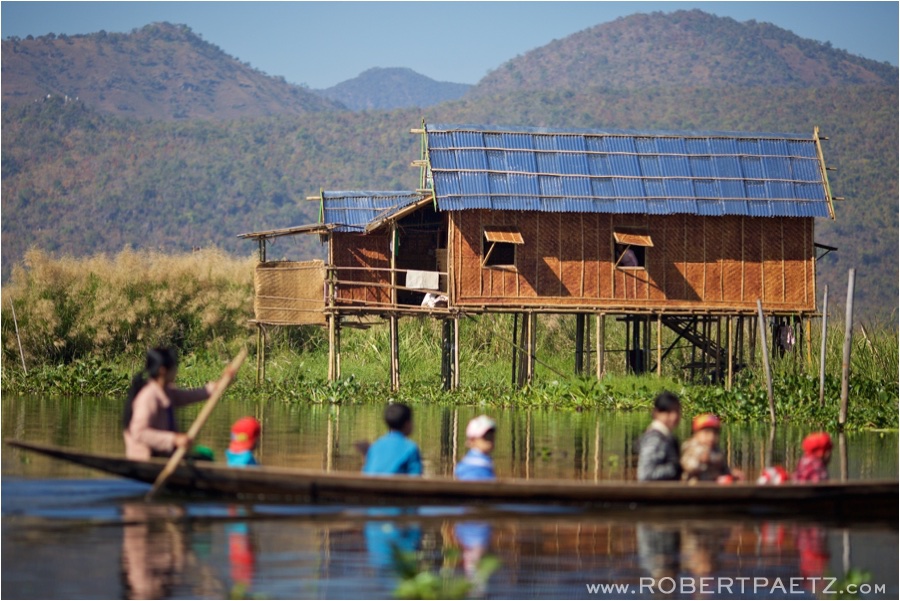
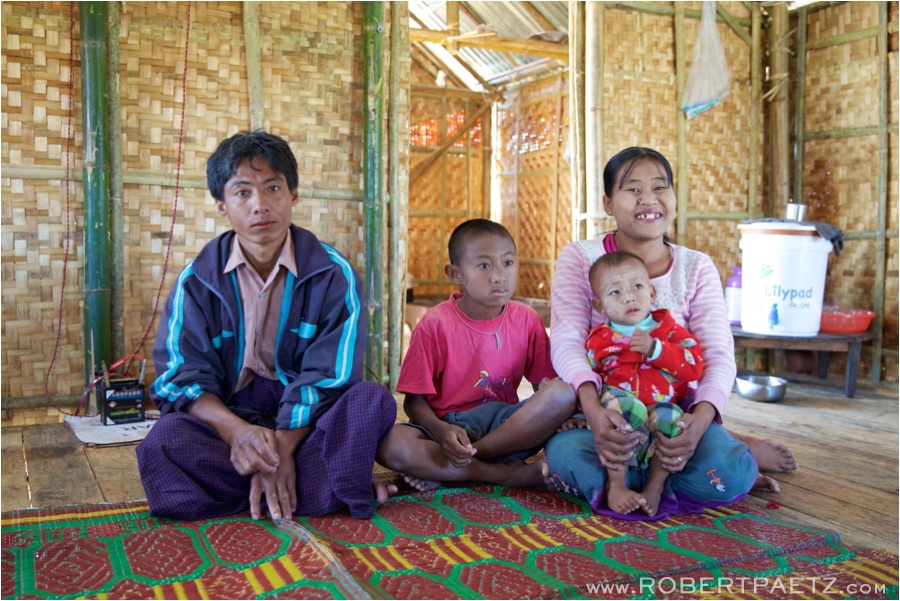
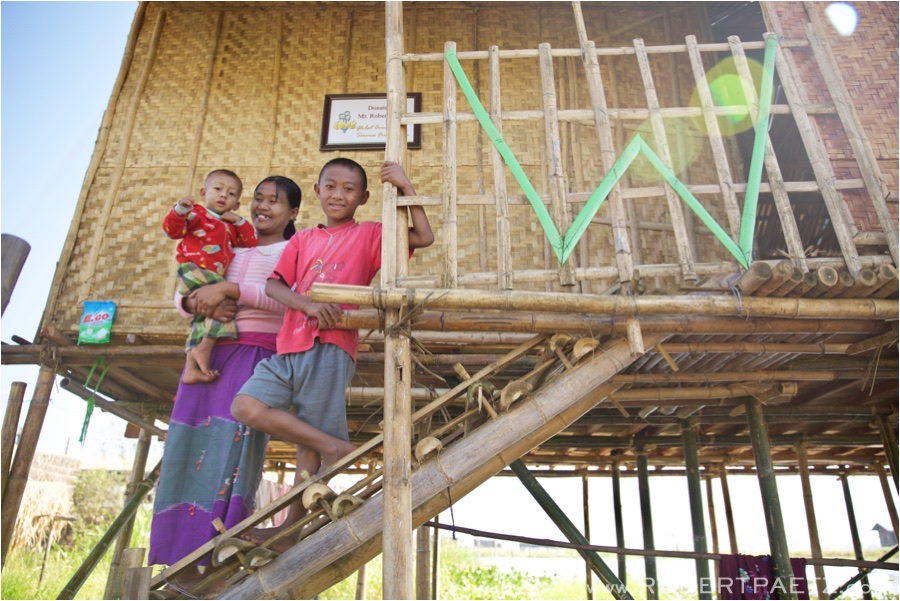
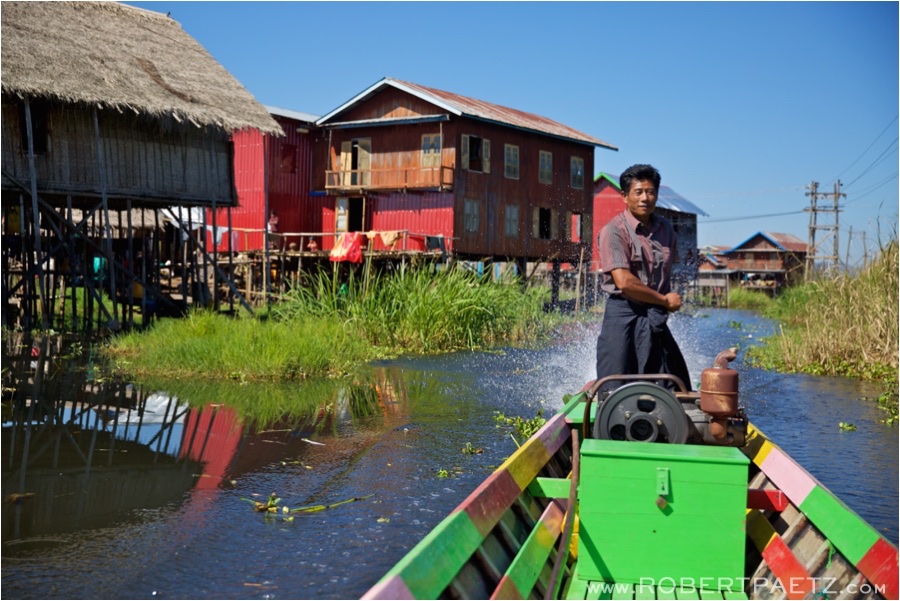
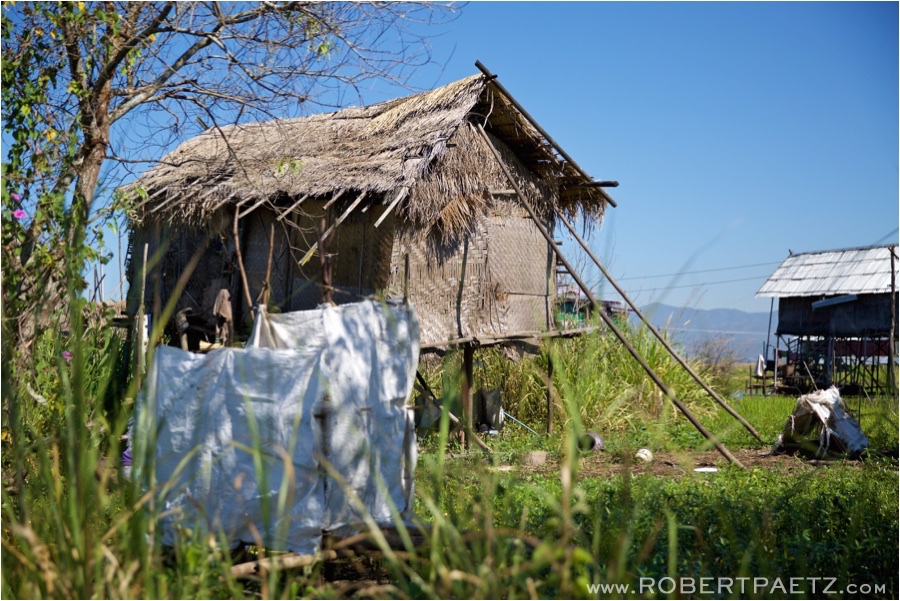
After visiting Ko Htay Yee and Ma Tin Htwe, Kaythi took me along as she boated around nearby Kan Khaung Village to interview other families in need to find someone who qualifies for the next home to be built. She takes advice from local village chiefs as to who in the town is most in need, but still personally visits the families to assess the house they are currently in and if it needs badly rebuilt. Sometimes we went into their homes and sat with them and spoke about their lives, other times Kaythi spoke with them from the boat. She also has a very strict, self imposed rule, to not build homes for people with drinking problems because it would only enable the problems further.
One of the homes we visited was of Daw Mya May, an older lady who seemed mostly deaf, and who shares a small house with her daughter, son-in-law and one school aged boy. Her daughter hasn’t recently lived with her since she was hospitalized with stomach problems and the son-in-law wasn’t around much. Leaving just Daw May May and a the young boy to fend for themselves.
After leaving Daw Mya May, Kaythi remarked that she would most likely select this home because the old woman and child need the assistance more than many of the other families we visited, and it would do the most good. I really don’t envy Kaythi having to sort though people in and have to pick.
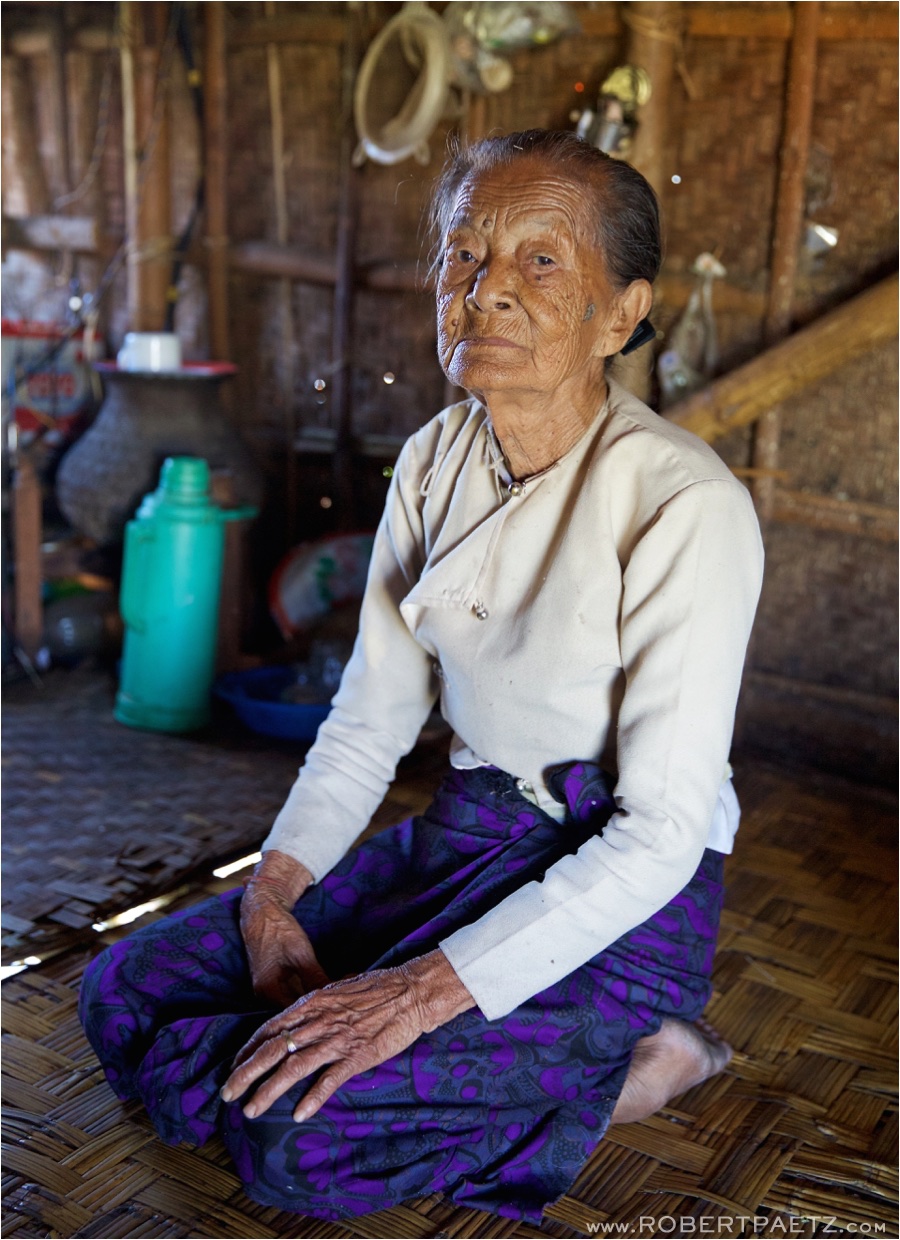
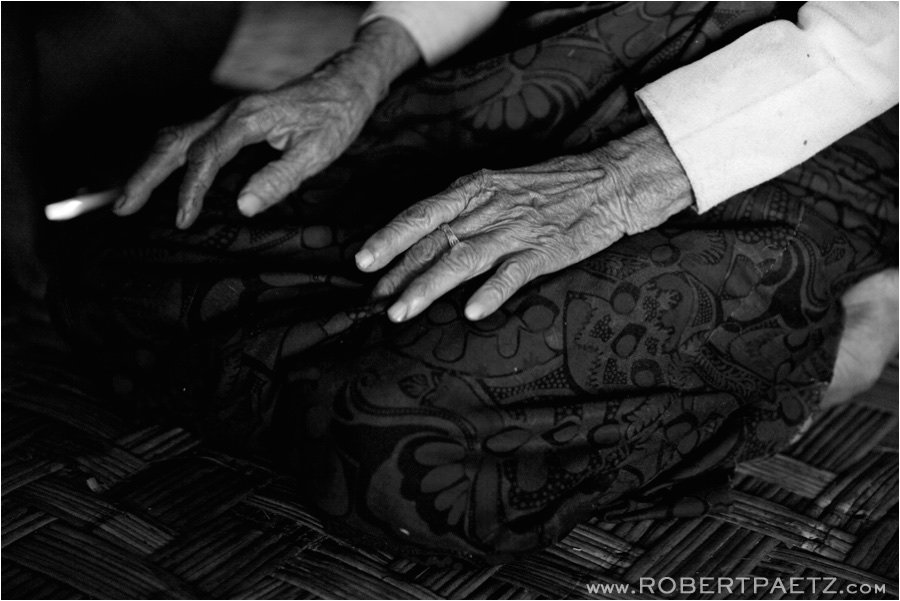
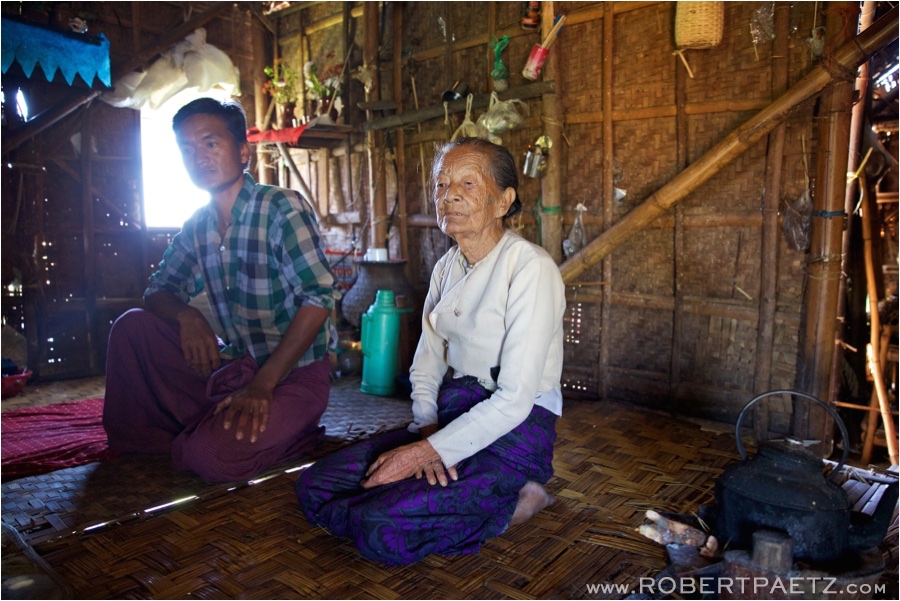
Daw Mya May with a local village who was introducing us to some of the families.
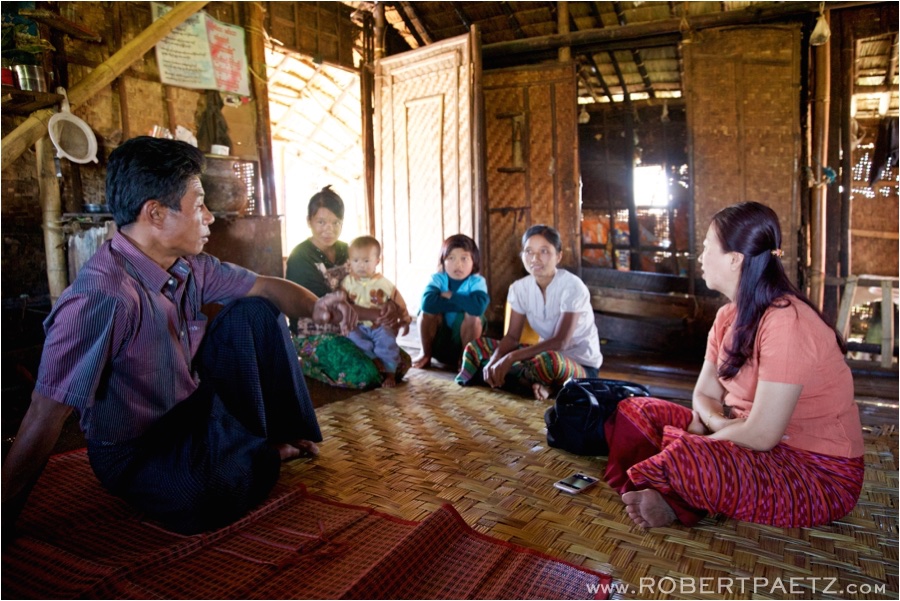
After speaking with Daw Mya May, we went and sat with one other family Kan Khaung Village who currently had multiple generations living in one small space. Everywhere I went in these small villages I was stared at with curiosity and greeted with warm smiles and cups of tea.
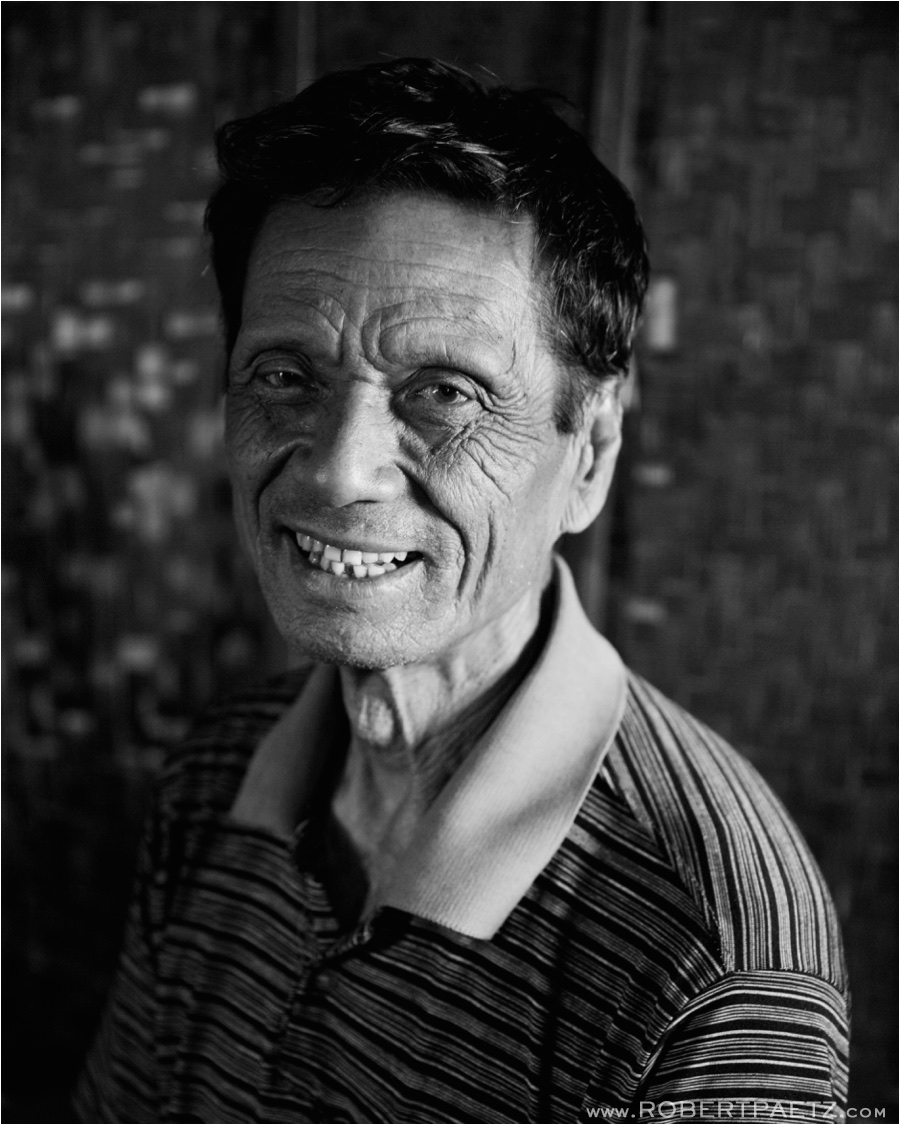


 You're ready for an e
You're ready for an e












 #laguna #lagunabeachengage
#laguna #lagunabeachengage




Share your thoughts